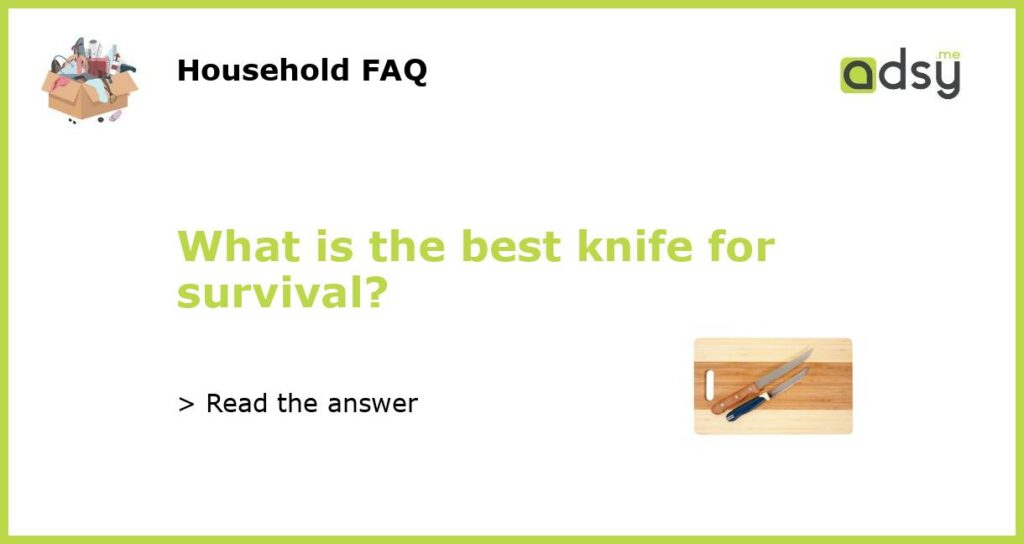The Best Knife for Survival: Finding the Perfect Tool for Survivalists
When it comes to survival situations, having a reliable and versatile knife can be the difference between life and death. A good survival knife should be durable, easy to handle, and capable of performing a variety of tasks. With so many options on the market, it can be challenging to determine which knife is the best choice for survival. In this article, we will explore the key features to look for in a survival knife and recommend several top picks.
Blade Design and Material
One of the most important factors to consider when choosing a survival knife is the blade design and material. A strong and sharp blade is essential for cutting branches, preparing food, and creating shelter. The most common blade designs for survival knives are drop point, clip point, and tanto. While drop point blades are versatile and excellent for general use, tanto blades are better for puncturing and prying. The blade material should also be considered, with stainless steel and high carbon steel being popular choices. Stainless steel is corrosion-resistant, while high carbon steel offers excellent edge retention.
Tang and Handle
The tang refers to the portion of the blade that extends into the handle. A full tang, where the blade extends through the handle and provides more stability, is highly recommended for survival knives. A full tang knife is less likely to break or separate, even when subjected to heavy use. The handle material is also vital for a comfortable and secure grip. Common handle materials for survival knives include rubber, wood, and synthetic composites. Avoid handles with sharp edges or rough textures that may cause discomfort or blistering during prolonged use.
Size and Weight
The size and weight of a survival knife are crucial considerations. Ideally, the knife should be small and lightweight enough to carry comfortably on your person or in a backpack. A blade length of 4-6 inches is often recommended, as it provides a good balance between utility and portability. Keep in mind that a larger knife may be more challenging to handle and may also be illegal to carry in certain areas.
Versatility and Additional Features
A good survival knife should be versatile and capable of performing a range of functions. Look for a knife that offers both a sharp cutting edge and a partially serrated edge. This allows for tasks such as slicing through rope or other tough materials. Some survival knives also come with additional features, such as a built-in firestarter, whistle, or glass breaker. These can be valuable tools in emergency and survival situations.
Budget and Reviews
Last but not least, consider your budget when choosing a survival knife. While it’s essential to invest in a high-quality knife that will stand up to rigorous use, there are options available at various price points. Reading reviews from other survivalists and outdoor enthusiasts can also provide valuable insights into the performance and durability of different knives. Websites like Outdoor Gear Lab and Blade HQ offer comprehensive reviews and recommendations on the best survival knives in the market.
Overall, finding the best knife for survival requires considering factors such as blade design and material, tang and handle, size and weight, versatility, budget, and reviews. By carefully evaluating these factors and considering your specific needs and preferences, you can select a survival knife that will become a trusted companion in any wilderness adventure or emergency situation.






